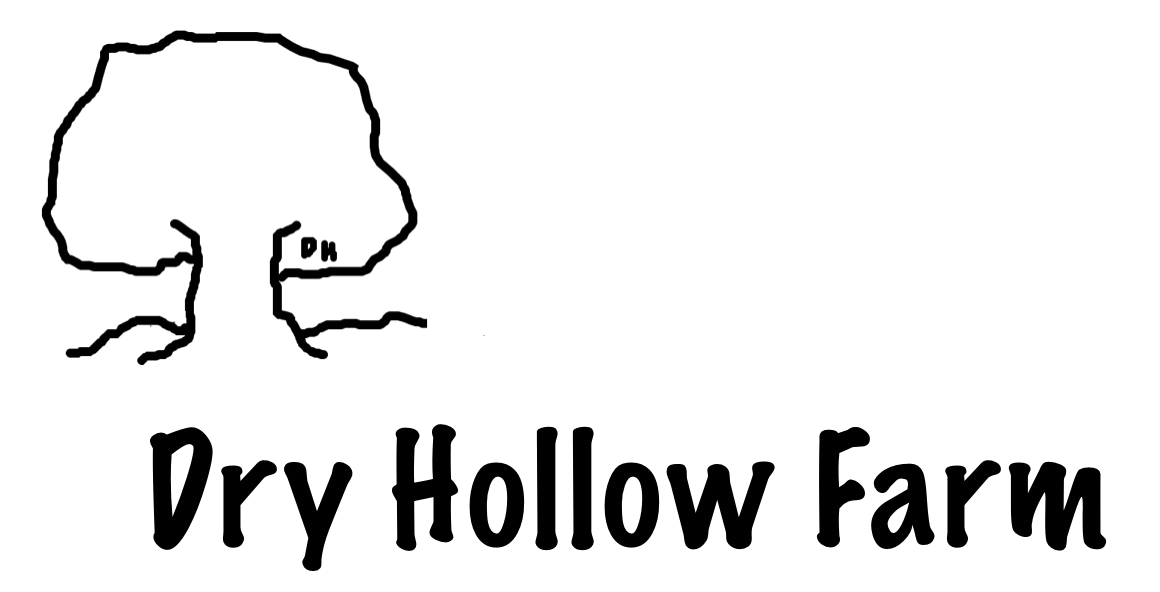Choosing a Pasture
At Dry Hollow Farm, our grazing land is divided into three separate areas, each with a mix of open pasture and woods. Within these areas, sets of gates allow us to block off areas, if needed. Rotational grazing for livestock allows the movement of animals from one paddock to another which reduces the dangers of overgrazing, including poor nutritional intake, parasite control, and vegetation disappearance.
Offering a mix of woods and open pasture is important for a goat’s digestive and mental health.
Digestive Health? Although goats will certainly chomp their way through a field of orchard grass and clover, their rumens need an equal amount of dense, woody material for proper functioning. When given a choice, our flock prefers to mingle leaves, briars, vines, and all manner of undergrowth with pasture grasses as they work their way through a grazing area.
If you stand and watch your flock, you will observe their “smorgasbord” approach to eating. They will wander through the pasture and woods, constantly eating everything they like best first. They will pass through the area a second time, eating the stuff they like second-best. Then again. And again.
Mental heath? Over the years, I have watched our goats throughout the day as they live their best goat lives. Their digestive system requires them to pause several times and ruminate, or chew their cud. Chewing their cud means that they regurgitate what they’ve just consumed for another round of chewing. Most of the time, this occurs lying down.
Because goats are low on the food chain, their need to ruminate makes them vulnerable to predators. For this reason, they prefer a wooded area with more protection or a large shelter for their cud-chewing siestas. They need to feel protected, hidden from predators, calm.
They also need a place to run when they get spooked, which is a frequent occurrence.
This past spring, we sold our flock of sheep and left the back pasture undisturbed for more than three months. Weeds grew, as well as briars, small saplings, plus pasture grass. It looked like a jungle (and still does!). Last week we moved most of the goat herd from the barn and pasture at the front of the farm to this more isolated pasture in the back. Although there were multiple shelters for their use, they spent the first week gathered at a gate in the woods they knew led them back to the barn. Gradually they dispersed and began exploring and eating their way through part of the overgrown pasture. However, they never ventured far from the patch of woods that covers about a third of the area.
Goat owners need to remember the 60/40 rule for goat health. Their pasture should include 60% woods and 40% open pasture. The more weeds and woods they explore, the better their milk and the healthier the animal.
Dr. Kathryn Bush owns and operates Dry Hollow Farm, a working goat and sheep farm in Huntingdon, Tennessee. Together with her husband, Russell, she creates skincare products from their fresh goat milk, grows organic herbs, welcomes visitors to their two cabins on the farm (available for stays through Airbnb), keeps the farm’s on-site soap shop stocked with their handcrafted products, and enjoys working the farm in company with their Great Pyrenees dogs (who work hard guarding the animals). Check out their natural products featuring farm-grown ingredients here, and sign up for the Dry Hollow Farm newsletter to stay in touch and be the first to hear about farm news, events, and new products.
